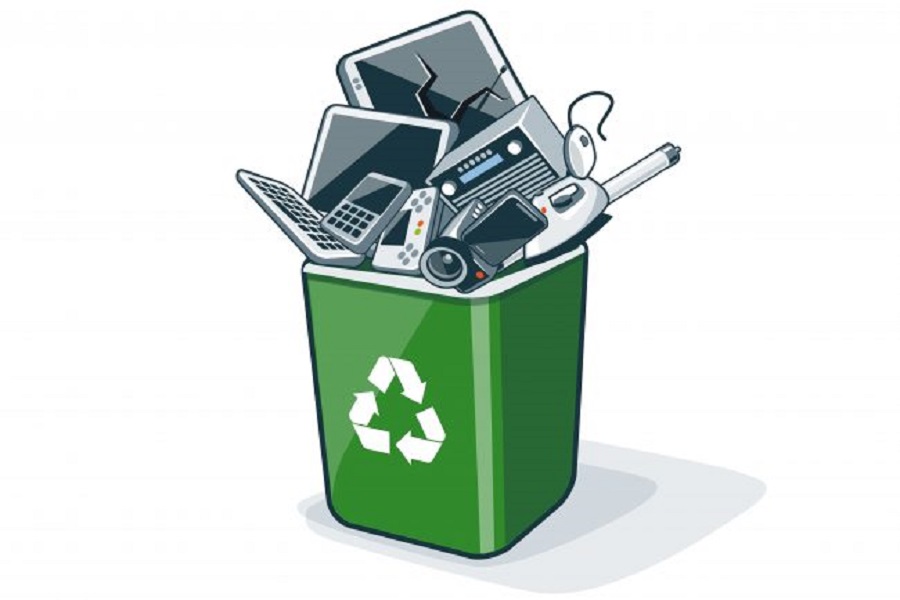Sustainable Electronics Disposal: Guarantee Compliance with R2 Certification
Sustainable Electronics Disposal: Guarantee Compliance with R2 Certification
Blog Article
Elevate Your E-Waste Management With R2 Certification: a Thorough Summary
One key method to elevate e-waste monitoring practices is by acquiring R2 certification. By checking out the advantages and procedures associated with R2 qualification, a deeper understanding of exactly how it can revolutionize e-waste administration approaches emerges, shedding light on a path in the direction of sustainability and ethical disposal methods.
Importance of E-Waste Monitoring

When e-waste is not handled appropriately, these hazardous substances can seep right into the environment, triggering harm to wildlife and potentially going into the food chain, positioning dangers to human health and wellness. Moreover, the incorrect disposal of e-waste contributes to contamination and greenhouse gas emissions, worsening climate modification and ecological destruction.

Advantages of R2 Qualification

To start with, R2 certification boosts reliability by showcasing a company's dedication to lasting methods. It ensures clients, companions, and stakeholders that the business sticks to strict requirements for e-waste monitoring - r2 certification. This reliability can lead to raised trust fund and improved relationships with customers that focus on ecological obligation
Secondly, R2 certification assists minimize threats connected with inappropriate e-waste disposal. By following the strict guidelines established forth by the accreditation, companies can minimize the likelihood of data breaches, environmental contamination, and legal consequences. This positive strategy safeguards the business's credibility and reduces possible liabilities.
Lastly, R2 certification shows a commitment to ecological stewardship - r2 certification. By properly taking care of digital waste via certified processes, companies add to the preservation of sources, decrease of air pollution, and promo of a circular economy. This dedication not only benefits the atmosphere but additionally aligns with progressing customer assumptions for sustainable business techniques
R2 Certification Process Review
Having actually developed the benefits of R2 certification in promoting integrity, threat reduction, and ecological stewardship, it is important to currently detail the detailed procedure associated with getting this certification. The R2 accreditation process starts with a thorough review of the organization's functional plans and procedures to make certain conformity with the R2 standard. This initial Going Here evaluation is crucial find more info in determining any voids that need to be dealt with before proceeding better.
As soon as the company's techniques line up with the R2 common requirements, an independent third-party auditor performs an on-site audit to examine the application and effectiveness of these techniques. This audit consists of a comprehensive testimonial of documentation, meetings with staff, and physical evaluations of centers to confirm compliance.
Following a successful audit, the company gets a certification decision based on the auditor's findings. If accepted, the company is approved R2 qualification, demonstrating its commitment to accountable e-waste management. It is essential to keep in mind that keeping R2 accreditation requires recurring compliance with the criterion's requirements and periodic audits to ensure continued adherence to ideal practices in e-waste recycling and disposal.
Key Standards for R2 Conformity
A crucial element of accomplishing R2 conformity is making sure that all digital waste (e-waste) handling facilities satisfy stringent ecological and security standards. To abide by R2 requirements, companies should follow crucial requirements that concentrate on responsible e-waste monitoring techniques. These requirements include applying a recorded ecological, health, and safety and security administration system, ensuring the safe and secure handling of data-containing tools, and conducting thorough downstream due persistance to track the last location of e-waste products.
Additionally, R2 compliance necessitates the proper testing, repair, and recycling of electronic equipment to expand its helpful life and minimize environmental impact. Facilities seeking R2 accreditation must also focus on employee health and wellness by offering necessary training, individual protective tools, and a risk-free functioning setting. Furthermore, keeping comprehensive check records of e-waste handling tasks and regularly undergoing audits by approved certifying bodies are crucial elements of showing recurring compliance with R2 criteria.
Effects of Sustainable E-Waste Practices
The application of sustainable e-waste practices according to R2 conformity not just makes certain environmental and security criteria are fulfilled but also substantially influences the general lifecycle of electronic items. By adhering to R2 standards, electronic waste administration procedures become much more reliable, lowering the environmental impact of digital items. Sustainable e-waste practices promote the proper disposal of digital parts, guaranteeing that harmful materials are managed responsibly and do not wind up polluting the atmosphere.
Furthermore, sustainable e-waste techniques can add to task production in the recycling and repair markets, fostering economic development while promoting environmental responsibility. Overall, the fostering of lasting e-waste techniques under R2 qualification serves as a critical action in the direction of achieving an extra eco lasting electronic devices market.
Final Thought
Finally, carrying out correct e-waste monitoring methods is critical for ecological sustainability and source preservation. R2 qualification plays a key role in ensuring liable handling and disposal of electronic waste. By sticking to the stringent criteria stated by R2 criteria, organizations can not just reduce their environmental effect however also add to a more sustainable future for generations ahead.
One key technique to boost e-waste management practices is by obtaining R2 accreditation. By discovering the procedures and advantages associated with R2 certification, a deeper understanding of just how it can change e-waste monitoring strategies arises, dropping light on a path towards sustainability and honest disposal practices.
The R2 qualification process starts with a complete evaluation of the company's functional plans and procedures to make sure compliance with the R2 requirement. If accepted, the company is granted R2 qualification, demonstrating its dedication to responsible e-waste monitoring. In general, the fostering of sustainable e-waste methods under R2 accreditation serves as a critical step in the direction of attaining an extra ecologically sustainable electronics market.
Report this page